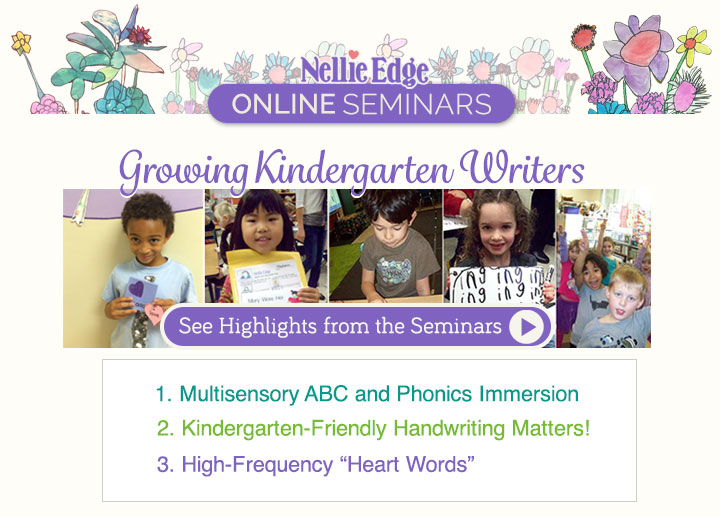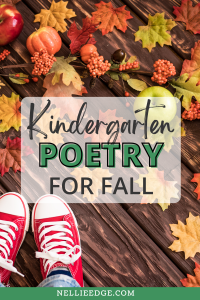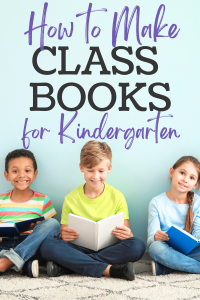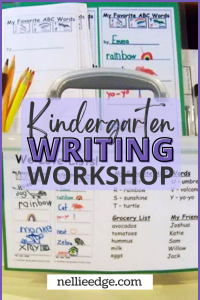Fall and Winter Handwriting Tips for Young Writers
- If handwriting skills are not automatic, it interferes with the whole writing process!
- Good handwriting skills facilitate rigorous Common Core writing standards: Continue working with each child’s name!
- Have high expectations
- Be intentional
- Create a sense of urgency: Your name is so important!

- Even by January, almost all kindergarten children will still need to see a Name Ticket Model of how their name looks when printed correctly—especially when they start working on their last name too. Consider using a model on lined paper: It may help the children learn letter-size relationships among letters. Use this “Name Ticket” as their standard of excellence to promote efficient name writing and beginning handwriting fluency. (Fluency = accuracy and speed!)
- Carefully observe each child forming the letters in their first name. Expect each letter to be formed correctly before letting the child practice both first and last name. Notice pencil grasp and whether letters are being formed from the top.
- Once a child can print her first name fluently, she may also practice pink “heart word” sentences for handwriting fluency.

- Remind children when they are writing their names on papers during the day to “Stop, think, and focus…and do quality work!” We use American Sign Language (ASL).

- Continue fingerspelling everything: It develops writing strength in the finger muscles while building memory hooks for letters and sounds.
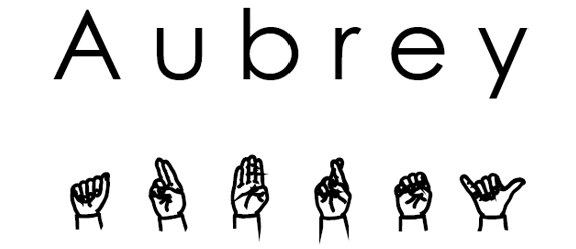
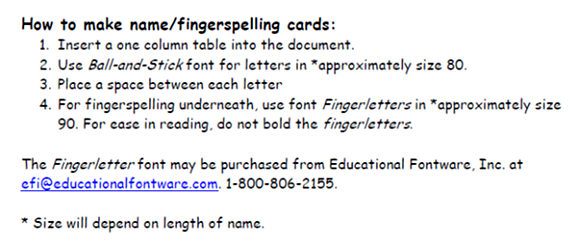 See How to Make Name/Fingerspelling Cards.
See How to Make Name/Fingerspelling Cards.
- Children need a consistent routine and a short, targeted, systematic time for daily name writing practice, ”heart word” quick writes, and a, b, c, d fluency drills. In some classrooms, this works best first thing in the morning as part of “settling-in time”; other teachers provide this practice after recess and before independent “choice time.” One of our colleagues developed a form to assist parent volunteers so they can accurately help children with the a,b,c,d handwriting challenge. We make connections with our ABC Phonics: Sing, Sing and Read! program throughout the curriculum.
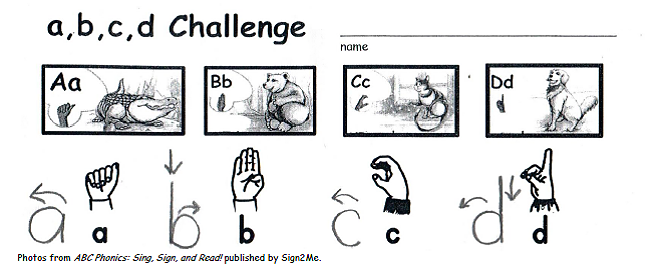
- In still other classrooms, the children are expected to always do their best name writing. Some teachers check the students’ names on their illustrated “I Can Read” Anthology (Notebook) pages or other art/writing pieces which gets finished before recess. This becomes their “ticket” to go outside. Expect good name writing throughout the day!
- Reteach the concept of continuous motion and lift the pen motion using spiral and twinkling art star projects if needed. (See original blog: Kindergarten Handwriting Matters!)

- Review the touchstone sentence: I love you. Notice how children are making the lowercase “y”—have them verbalize “short diagonal, long diagonal.” Let them write fancy “I love you” secret messages (to take home and hide) as soon as they have demonstrated mastery! By January, they will add “I love you because…” (Opinion writing) or “I like cats/dogs because…and because…”
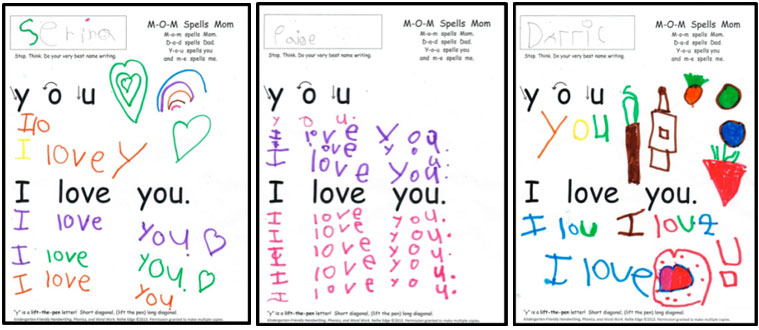
- Review minilessons for the word “dog” and “cat” to work on the counterclockwise “O” movement. Use white boards. Then introduce the Independent Writing Tote so the children can build fluency by writing, drawing, and making books about dogs and cats and other animals. Children love making books!
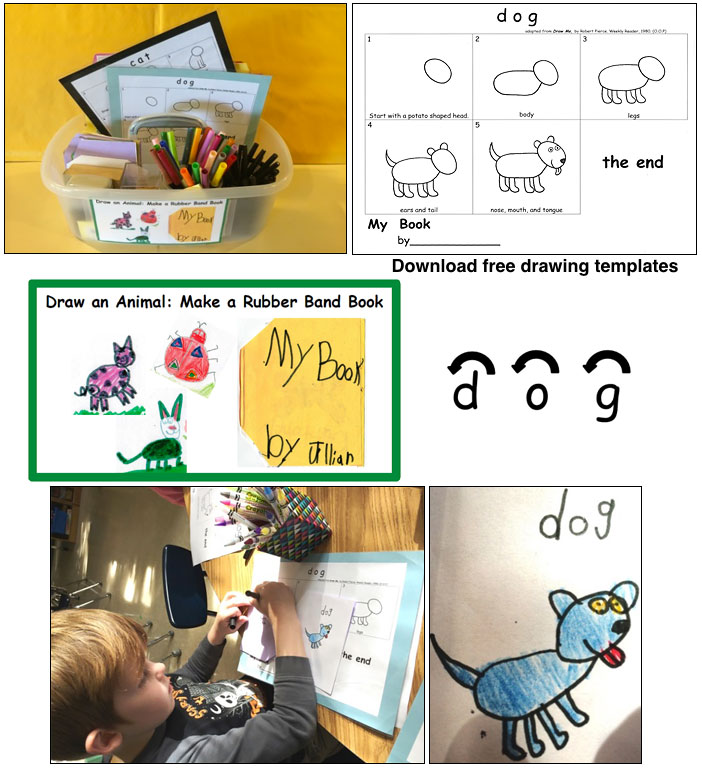
- Review handwriting motions within the context of high-frequency “heart word” sentence patterns before children do independent book making activities. Expect quality handwriting: “I see the dog.” Sing, Sign and Write ”This is my house” from Sing, Sign, Spell, and Read! CD.
- Before children engage in the Book Making/Word Work Fluency totes, use white boards to reteach and review letter shapes for “My Book, by,” and “the end.” Always have multiple copies of the language models at the table as a memory scaffold for quality handwriting.
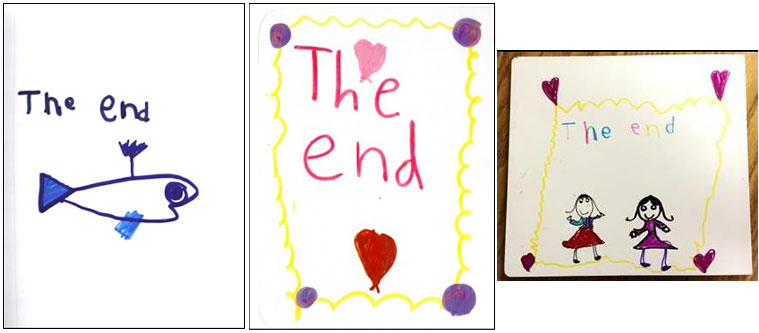
- Consider sending home a first and last name model and the Name Ticket Practice Book again asking families to help the child practice twice a day (especially after your Fall or Winter Literacy Evening!). Parents value good handwriting and appreciate that it is being taught. Make sure they have a Name Ticket Model.
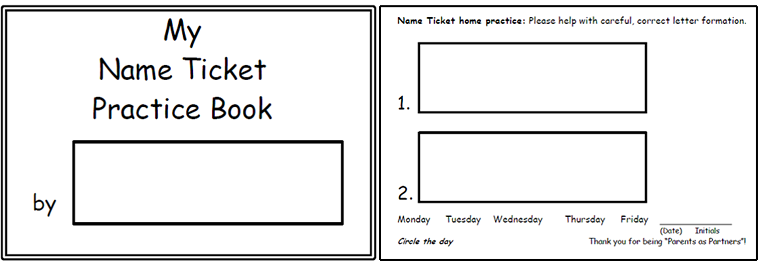
- Continue to notice each child’s pencil grasp. Teach an efficient pencil grip. Consider using the CLAW or a large triangle crayon with the children who need support to build muscle memory for pencil holding. Encourage families to use it at home.
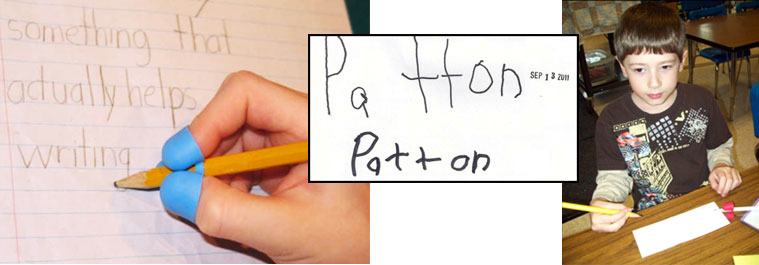
- If you notice that several children are not making the “e” efficiently, do a white board lesson using the word “love” or “like” or “the end.” Fast writes build fluency! Ask children to verbalize how to form the “e”: “out and around” while forming the letter in the air. Emphasize the first “horizontal” line.
- For optimal teaching, every time we introduce a new “heart word,” we provide a lesson involving writing the word multiple times! This can be a white board lesson, a creative art piece, or a page from our Kindergarten-Friendly Handwriting, Word Work, and Phonics book. Use the Sing, Sign, Spell and Read! anthology pages for follow-up practice.
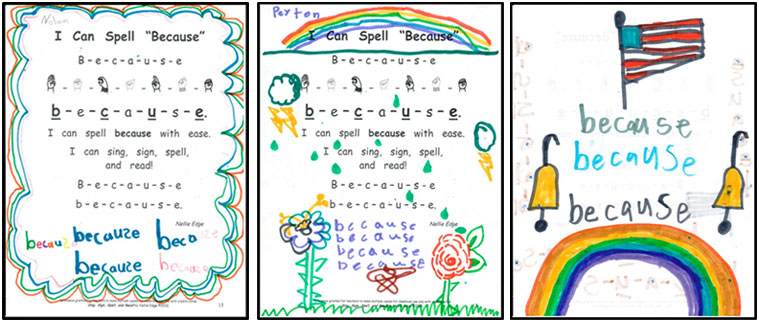
- For harder-to-accelerate children who are receiving individual letter recognition/phonics tutoring as a Response to Intervention (R.T.I.), always incorporate handwriting! Shaping the letter efficiently will help the brain remember the visual pattern and sound of each letter.
- Notice children’s independent writing: Record letter formation problems so you can provide appropriate individual or small group instruction. (We understand this is very challenging in large half-day programs however, we believe it will be the norm in quality all-day kindergarten models.)
- Honor children as “name writing experts” once they have learned efficient handwriting motions for each of their letters. The experts can each make a crown and have their pictures taken for a class book or receive a badge or certificate. Kindergarten children love recognition for having worked hard and achieved an important learning target.
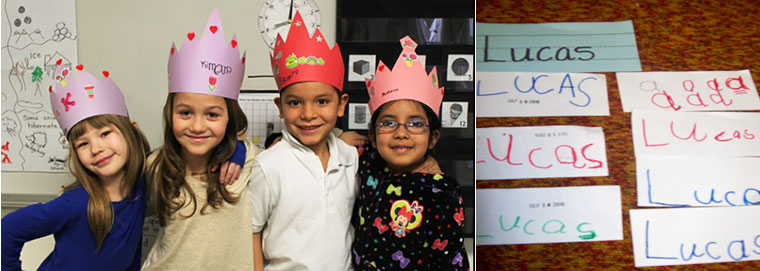
- Expect good handwriting for the pink and purple “heart words”: include writing the word with fluency as a part of becoming a master of each new set of words! Once pink and purple words are mastered, children will be able to efficiently write every lowercase letter except j, q, and z.
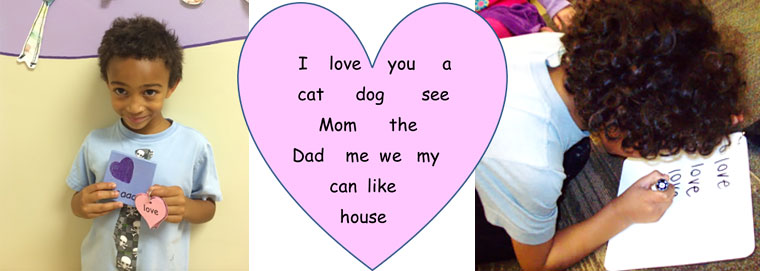
- For children who are still challenged by the skill of holding a pencil, ask to have an occupational therapist, doctor, or learning specialist screen the child for large motor integration and strength. Can the child crawl? Cross the midline? Are their arm and shoulder muscles strong enough to support handwriting? Can their fingers form a web for pencil control? Again, continue fingerspelling to build fine motor skills.
See our Pinterest Kindergarten-Friendly Handwriting board for useful articles from occupational therapists.
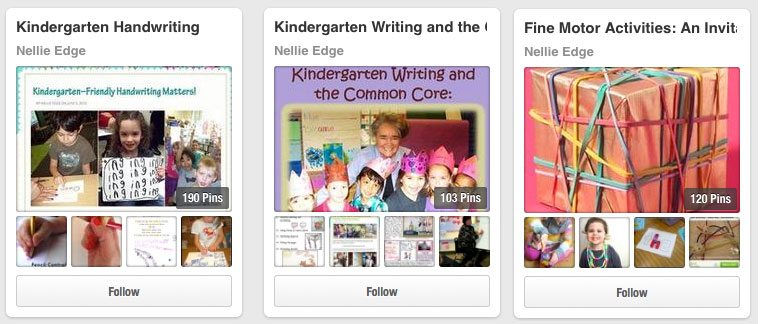
Sing the handwriting songs and chants: “I Always Start My Letters at the Top”, “The I Chant”, and “O Dance.” http://www.pinterest.com/pin/569142471632852490/

Teach handwriting while simultaneously practicing high-frequency “heart words” to accelerate literacy.

We send copies of our Sing, Sign, Spell and Read! CD home with children. (Permission granted to make multiple copies for family literacy.) Families love singing along and being “parents as partners” in joyful accelerated literacy learning.
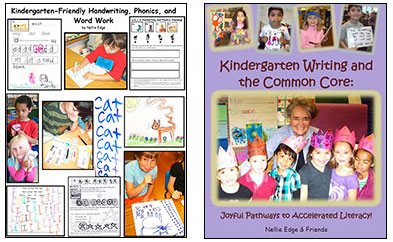
- For teachers already using our Kindergarten-Friendly approach to handwriting consider rereading the first 20 page photo essay in the Teachers’ Guide: Kindergarten-Friendly Handwriting, Word Work and Phonics by Nellie Edge and read Chapter 3 in Kindergarten Writing and the Common Core: Joyful Pathways to Accelerated Literacy.
For additional information about Kindergarten-Friendly Handwriting, see our earlier blogs.

Your Professional Development just got easier!
3 Foundation Seminars for $39 each
(individually $59)
The entire Sing, Sign, Spell & Read! program is included as a FREE digital download.
A special thank you to to Jaime Corliss, Celeste Starr, Laura Flocker, Katie Nelson, Shanda Lung, Kathie Bridges, Shabri Vignery, and Kristi Nelson for collaboration in our ongoing teacher-research on the most authentic, inexpensive, and time-efficient way to teach kindergarten-friendly handwriting and high-frequency "heart words".
Some free helpful links:
- Name Ticket Practice Book
- The Printing “I” Chant
- I Always Start My Letters
- For video and audio of L-O-V-E Spells Love see L-o-v-e Spells Love ASL Instructional Video
- Draw Animals and Make Rubber Band Books (dog and cat) Nellie Edge TpT Store
We enjoy hearing about your success using this authentic approach to kindergarten-friendly handwriting. We will make every effort to respond to questions for several days after this is posted. Please post your comments below.


